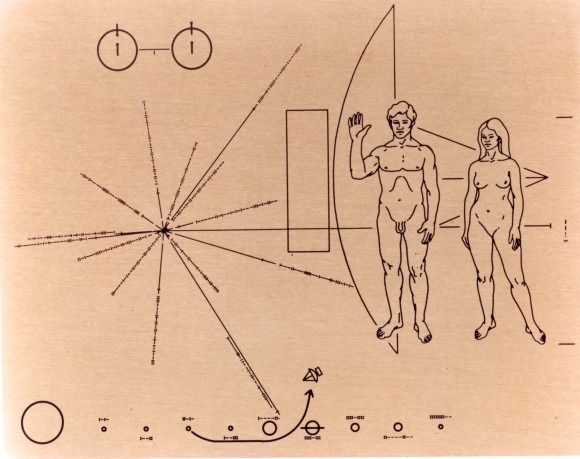Is it likely that human level intelligence and technological civilization has evolved on other worlds? If so, what kinds of sensory and cognitive systems might extraterrestrials have? This was the subject of the workshop ‘The Intelligence of SETI: Cognition and Communication in Extraterrestrial Intelligence’ held in Puerto Rico on May 18, 2016. The conference was sponsored by the newly founded METI International (Messaging to ExtraTerrestrial Intelligence). One of the organization’s central goals is to build an interdisciplinary community of scholars concerned with designing interstellar messages that can be understood by non-human minds.

At present, the only clues we have to the nature of extraterrestrial minds and perception are those that can be garnered by a careful study of the evolution of mind and perception here on Earth. The workshop included nine speakers from universities in the United States and Sweden, specializing in biology, psychology, cognitive science, and linguistics. It had sessions on the evolution of cognition and the likely communicative and cognitive abilities of extraterrestrials.
Doug Vakoch, a psychologist and the founder and president of METI International, notes that astronomers and physicists properly concern themselves largely with the technologies needed to detect alien intelligence. However, finding and successfully communicating with aliens may require attention to the evolution and possible nature of alien intelligence. “The exciting thing about this workshop”, Vakoch writes, “is that the speakers are giving concrete guidelines about how to apply insights from basic research in biology and linguistics to constructing interstellar messages”. In this, the first installment dealing with the conference, we’ll focus on the question of whether the evolution of technological societies on other planets is likely to be common, or rare.

We now know that most stars have planets, and rocky planets similar to or somewhat larger than the Earth or Venus are commonplace. Within this abundant class of worlds, there are likely to be tens of billions with conditions suitable for sustaining liquid water on their surfaces in our galaxy. We don’t yet know how likely it is that life will arise on such worlds. But suppose, as many scientists suspect, that simple life is abundant. How likely is it that alien civilizations will appear; civilizations with which we could communicate and exchange ideas, and which could make their presence known to us by signaling into space? This was a central question explored at the conference.
In addressing such questions, scientists have two main sets of clues to draw on. The first comes from the study of the enormous diversity of behavior and nervous and sensory systems of the animal species that inhabit our Earth; an endeavor that has been called cognitive ecology. The second set of clues come from modern biology’s central principle; the theory of evolution. Evolutionary theory can provide scientific explanations of how and why various senses and cognitive systems have come to exist here on Earth, and can guide our expectations about what might exist elsewhere.


For example, cognitive skills like social learning and teaching, generalizing from examples, using tools, recognizing individuals of one’s species, making plans, and understanding spatial relationships have all been shown to exist in arthropods (an animal group consisting of insects, spiders, and crustaceans). The evidence shows the surprising power of the diminutive brains of insects, and indicates that we know little of the relationship between brain size and cognitive ability.
But different animals often have different sets of cognitive skills, and if a species is good at one cognitive skill, that doesn’t necessarily mean it will be good at others. Human beings are special, not because we have some specific cognitive ability that other animals lack, but because we possess a wide range of cognitive abilities that are more exaggerated and highly developed than in other animals.

Although the Earth, as a planet, has existed for 4.6 billion years, complex animals with hard body parts don’t appear in the fossil record until 600 million years ago, and complex life didn’t appear on land until about 400 million years ago. Looking across the animal kingdom as a whole, three groups of animals, following separate evolutionary paths, have evolved especially complex nervous systems and behaviors. We’ve already mentioned arthropods, and the sophisticated behaviors mediated by their diminutive yet powerful brains.
Molluscs, a group of animals that includes slugs and shellfish, have also produced a group of brainy animals; the cephalopods. The cephalopods include octopuses, squids, and cuttlefish. The octopus has the most complex nervous system of any animal without a backbone. As the product of a different evolutionary path, the octopus’s sophisticated brain has a plan of organization that is completely alien to that of more familiar animals with backbones.
The third group to have produced sophisticated brains are the vertebrates; animals with backbones. They include fishes, amphibians, reptiles, birds, and mammals, including human beings. Although all vertebrate brains bear a family resemblance, complex brains have evolved from simpler brains many separate times along different paths of vertebrate evolution, and each such brain has its own unique characteristics.
Along one path, birds have evolved a sophisticated forebrain, and with it, a flexible and creative capacity to make and use tools, an ability to classify and categorize objects, and even a rudimentary understanding of numbers. Following a different path, and based on a different plan of forebrain organization, mammals have also evolved sophisticated intelligence. Three groups of mammals; elephants, cetaceans (a group of aquatic mammals including dophins, porpoises, and whales), and primates (monkeys and apes, including human beings) have evolved the most complex brains on Earth.
Given the evidence that intelligent problem solving skills of various sorts have evolved many times over, along many different evolutionary pathways, in an amazing range of animal groups, one might suspect that Dornhaus believes that human-style cognitive abilities and civilizations are widespread in the universe. In fact, she doesn’t. She thinks that humans with their exaggerated cognitive abilities and unique ability to use language to express complex and novel sorts of information are a quirky and unusual fluke of evolution, and might, for all we know, be wildly improbable. Her argument that alien civilizations probably aren’t widespread resembles one stated by the imminent and influential American evolutionary biologist Ernst Mayr in his 1988 book Towards a New Philosophy of Biology.
There are currently more than 10 million different species of animals on Earth. All but one have failed to evolve the human level of intelligence. This makes the chance of evolving human intelligence less than one in 10 million. Over the last six hundred million years since complex life has appeared on Earth, there have been tens of million different animal species, each existing for roughly 1-10 million years. But, so far as we know, only one of them, Homo sapiens, ever produced a technological society. The human lineage diverged from that of other great ape species about 8 million years ago, but we don’t see evidence of distinctly human innovation until about 50,000 years ago, which is, perhaps, another indication of its rarity.
Despite the apparent improbability of human level intelligence evolving in any one lineage, Earth, as a whole, with its vast array of evolutionary lineages, has nonetheless produced a technological civilization. But that still doesn’t tell us very much. For the present, Earth is the only habitable planet that we know much of anything about. And, since Earth produced us, we are working with a biased sample. So we can’t be at all confident that the presence of human civilization on Earth implies that similar civilizations are likely to occur elsewhere.
For all we know, the quirky set of events that produced human beings might be so wildly improbable that human civilization is unique in a hundred billion galaxies. But, we don’t know for sure that alien civilizations are wildly improbable either. Dornhaus freely concedes that neither she nor anybody has a good idea of just how improbable human intelligence might be, since the evolution of intelligence is still so poorly understood.
Most current evolutionary thinking, following in the footsteps of Mayr and others, holds that human civilization was not the inevitable product of a long-term evolutionary trend, but rather the quirky consequence of a particular and improbable set of evolutionary events. What sort of events might those have been, and just how improbable were they? Dornhaus supports a popular theory proposed by Dr. Geoffrey Miller, an evolutionary psychologist who is an associate professor in the Department of Psychology at the University of New Mexico and who also spoke at the METI institute workshop.
In our next installment we’ll explore Miller’s theories in a bit more detail, and see why the abundance of extraterrestrial civilizations might depend on whether or not aliens think big brains are sexy.
For further reading:
Baluska, F. and Mancuso, S. (2009) Deep evolutionary origins of neurobiology. Communicative and Integrative Biology, 2:1, 60-65.
Chittka, L. and Niven, J. (2009) Are bigger brains better?, Current Biology. 19:21 p. R995-R1008.
Margonelli, L. (2014) Collective mind in the mound: How do termites build their huge structures. National Geographic.
Mayr, E. (1988) The probability of extraterrestrial intelligent life. In Towards a New Philosophy of Biology, Harvard University Press, Cambridge, MA.
Patton, P. E. (2015) Who speaks for Earth? The controversy over interstellar messaging. Universe Today.
P. Patton (2014) Communicating across the cosmos, Part 1: Shouting into the darkness, Part 2: Petabytes from the Stars, Part 3: Bridging the Vast Gulf, Part 4: Quest for a Rosetta Stone, Universe Today.
Tonn, S. (2015) Termites are teaching architects to design super-efficient skyscrapers. Wired Magazine.





